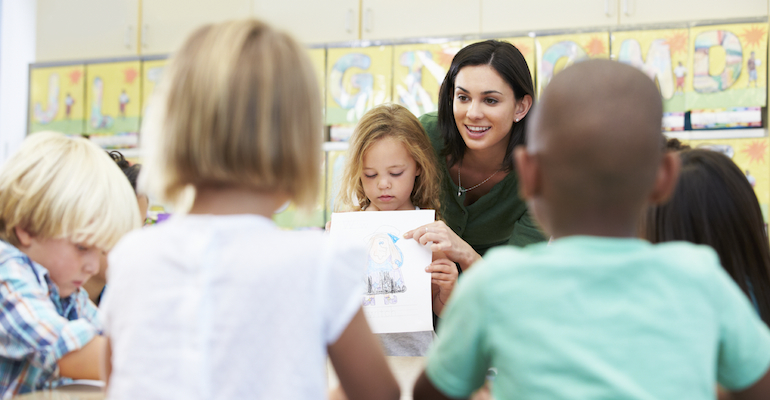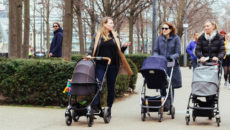Teacher was Responsive
When my youngest son, Cosmin (adopted from Romania), was asked to create a family tree in second grade, I helped him make two trees — one of his biological family (luckily I had met his parents, grandparents, and other relatives), and one of his adoptive family. However, Cosmin reported that the teacher only displayed his adoptive family tree in the classroom.
I wrote the teacher a nice note saying that we place as much emphasis on his Romanian heritage as we do on his adoptive one, and asked that both family trees be given equal attention. She posted his birth family tree right away, and Cosmin became the only child in his class with two trees. This made him happy and afforded his peers the opportunity to learn about adoption, other heritages, countries, and ethnic groups. Obviously, it was a learning opportunity for the teacher, as well!
—Carlene
My daughter was very upset when, in the fourth grade, she was asked to write about the origin of her name. Who gave it to her? What does it mean? We asked whether she’d like us to talk to the teacher, and she said yes.
I explained to her teacher that this was a difficult topic, because a response would require explaining a great deal about her early years. Although she is proud of her Chinese name and heritage, she did not want to explain the details of her adoption to her classmates. Her teacher was kind and understanding. With her prompting, other students volunteered that the assignment was difficult for them, as well. The teacher provided several alternatives for completing the assignment, one of which was chosen by our relieved daughter.
—Jill
No Interaction with Teacher
When I was younger, my biology class had to make a family tree — the kind with solid and dashed lines indicating marriage or blood relations. I have two adopted siblings and I was distressed because there was no instruction on how to place adopted children on the tree.
So, I put my siblings on the chart and connected them with a line of little hearts. Now that I am a Mom to a beautiful little girl from Kazakhstan, I am going to do my best to make sure my daughter is not suddenly stumped as to how to include herself in her family.
—Ellen
My nine-year-old was assigned a timeline, starting at birth, and ending in the present, with each year to be represented by an event and a photograph. We have very little information about her early years, so we decided to create a page with general information for each year — e.g. “In 1996 I learned how to walk.” We used photos and maps of her birth country for the years for which we had no personal information. She presented the project with no discussion of its unusual challenges.
—An AF reader
Eighth-graders at my son’s school are assigned a major project: Students are asked to research their genealogy, prepare a family tree, interview an ancestor, all with the goal of understanding their heritage. My son, adopted from Bulgaria, wanted to research his Bulgarian heritage but could not do so within the confines of the project. He felt strongly that his heritage is not that of his adoptive family. He was embarrassed and confused.
We came up with several options and, ultimately, he decided to base his project on his adoptive grandfather. At his age, it’s hard to present a project that underscores your differences from your peers. In the end, the project went well.
Subsequently, we recommended changes in the project’s wording and structure to the Social Studies department for future years.
—An AF reader
When my son, Anton, came home with the dreaded “When I was born” assignment a year after his adoption, I decided to take my cues from him. Anton’s assignment asked for pictures and descriptions of what he was like at birth, and ages two, four, and six. We sat down at the kitchen table, and I asked him:
“What do you think you looked like when you were born?”
“An elf.”
“Okay. Let’s write that down. What about when you were 2?”
“I was a really cute elf!”
“I bet you were! What were you at age 4?”
“I was a clever elf.”
“You’re STILL clever, Anton! Great. So what were you like when you were 6?”
“I was a really FAST elf.”
“You’re STILL really fast, aren’t you?”
“Yeah, Mom. Super fast.” (He runs to the end of the kitchen and back.)
“So, Anton. We’re done with your assignment, but tell me something. If you were cute, then clever, then fast, what are you now?”
“I’m SMART!”
“You certainly are!”
—Patricia
My oldest daughter was assigned a timeline in twelfth grade, just six months after she arrived home. She was worried because she didn’t have any pictures of herself as a child. She went ahead with the assignment, using the pictures she had and the dates that she knew. The day we first met her, the court date, the day she left the orphanage for Kiev, the day we flew to Warsaw, the day she entered the United States, and a picture of her taking the oath of allegiance to become and American Citizen. It was a great success. Her class praised her and was really interested in her story.
—Lynn
Teacher was Unhelpful
My son’s class was given a standard family tree to complete — one with a trunk and branches, no roots, no space for more than one family. When we enthusiastically presented alternative models to his teacher, she stunned us by dismissing our suggestions — the project was merely for extra credit, she said, so there was no need to change it.
My son did it anyway, masterfully creating HIS family tree. He handed it in, but the teacher didn’t post it with the others. Our son implored us not to speak to her again because he didn’t want to be embarrassed. What a lost opportunity to introduce classmates to different kinds of family origins!
—An AF reader
One evening I found my fourth-grade daughter, Eleanor, intense and frustrated, puzzling over a family tree assignment. As the adopted child of a single mother, her family tree bears no resemblance to the model her teacher had circulated. Eleanor had raised her hand in class to ask how she should complete it, but the teacher had not given her a clear response.
Eleanor and I worked together to construct a “Family Forest,” representing the loving trees that came together to make our family. I reassured her that I would take responsibility for the adaptation of the project.
The next morning I met with the teacher and gave her a letter explaining that Eleanor’s graphic suggests the many ways to build a family. I enclosed resources that explain how adoptive families think of family trees and invited the teacher to discuss the topic further. She neither called nor mentioned the topic when we met thereafter.
—Kate
When our son, Alex, was in second grade, his teacher contacted me to explain a “Birth Story” assignment: Each child would write about the day he was born, read the story aloud, and display a newborn picture. Alex was adopted from Russia at the age of five and we have no pictures or artifacts from the early, difficult years of his life. I encouraged the teacher to expand the assignment, but she was reluctant and asked me to come up with an alternative.
Incredibly, the next year, not only did this teacher repeat the assignment, but the children were asked to make paper dolls the same size they were at birth. Alex attends a private school, and the teachers know the children’s backgrounds. I am only hoping that this class included only biological children with pleasant backgrounds!
—Marla



